Home>Storage Ideas>Bathroom Storage>How To Clean A Shower Curtain And Its Liner
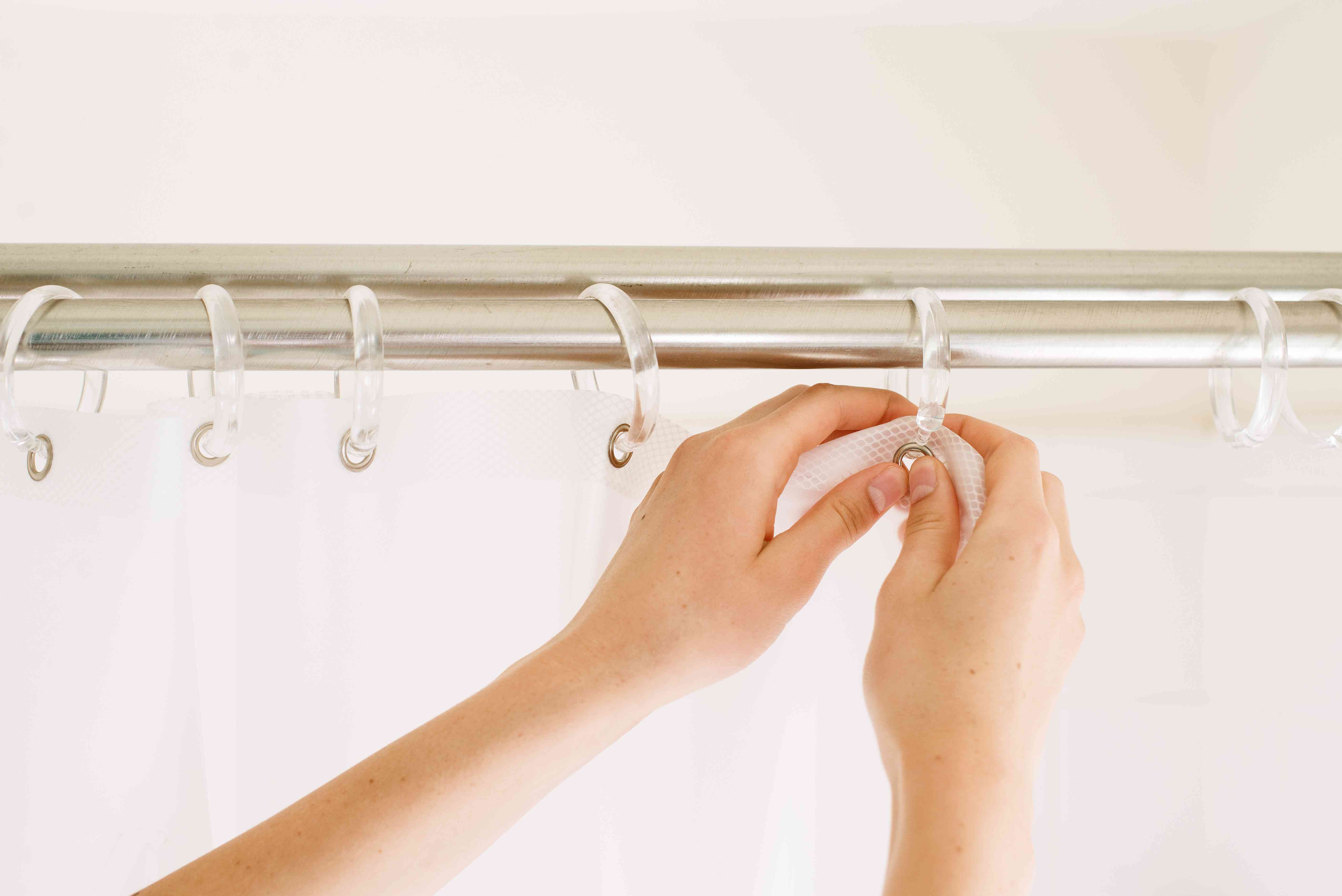

Bathroom Storage
How To Clean A Shower Curtain And Its Liner
Modified: March 2, 2024
Learn how to properly clean your shower curtain and liner with our easy-to-follow guide. Discover effective tips for maintaining bathroom storage and keeping it clean.
(Many of the links in this article redirect to a specific reviewed product. Your purchase of these products through affiliate links helps to generate commission for Storables.com, at no extra cost. Learn more)
Introduction
Welcome to our comprehensive guide on how to clean a shower curtain and its liner. We all know that the bathroom is an essential part of our daily routine, and keeping it clean and organized is crucial for maintaining a hygienic environment. However, often overlooked, the shower curtain and liner can accumulate dirt, soap scum, and even mold and mildew over time.
Regular cleaning of your shower curtain and liner not only ensures a fresh and inviting bathroom space, but also helps prolong their lifespan. In this article, we will provide you with step-by-step instructions on how to effectively clean your shower curtain and liner, along with some valuable tips to prevent the growth of mold and mildew.
So, let’s roll up our sleeves and get ready to give your bathroom a makeover by restoring the cleanliness and freshness of your shower curtain and liner!
Key Takeaways:
- Regularly cleaning your shower curtain and liner is crucial for preventing mold, mildew, and stains, ensuring a fresh and inviting bathroom space while extending their lifespan and saving money on replacements.
- Incorporating preventative measures such as proper ventilation, regular cleaning, and using anti-microbial liners can significantly reduce the likelihood of mold and mildew, maintaining a cleaner and healthier bathroom environment.
Read more: How To Clean A Shower Curtain Liner
Why cleaning your shower curtain and liner is important
Keeping your shower curtain and liner clean is not just about maintaining the appearance of your bathroom; it is also crucial for your health and wellbeing. Here are a few reasons why regular cleaning of your shower curtain and liner should be a part of your cleaning routine:
- Preventing mold and mildew: The warm, damp environment of the shower creates the perfect breeding ground for mold and mildew. If left uncleaned, mold and mildew can not only stain your curtain and liner but also lead to respiratory issues and allergic reactions. Regular cleaning helps remove any existing mold and prevents its growth in the future.
- Eliminating soap scum and stains: Over time, soap scum, hard water stains, and sediment can build up on your shower curtain and liner, giving them a dirty and unsightly appearance. By cleaning them regularly, you can remove these stubborn stains and keep your curtain and liner looking fresh and clean.
- Extending the lifespan of your curtain and liner: Regular cleaning helps remove dirt, grime, and oils that can weaken the fabric and materials of your shower curtain and liner, reducing their durability. By keeping them clean, you can increase their lifespan and save money in the long run by avoiding frequent replacements.
- Maintaining a hygienic environment: The bathroom is a space where cleanliness is crucial. By ensuring that your shower curtain and liner are clean, you can prevent the spread of bacteria, fungi, and other germs that may accumulate and thrive on them. This is especially important if you have young children or family members with weakened immune systems.
Now that you understand the importance of regularly cleaning your shower curtain and liner, let’s delve into the step-by-step process of how to effectively clean them to achieve a fresh and inviting bathroom space.
Materials needed for cleaning
Before you begin the process of cleaning your shower curtain and liner, it’s important to gather all the necessary materials. Here’s a list of items you’ll need:
- Mild detergent or vinegar: Choose a mild detergent specifically designed for cleaning fabrics or opt for white vinegar, which is a natural cleaning agent with mild disinfectant properties.
- Baking soda: Baking soda is a versatile and effective cleaning agent that can help remove stubborn stains and odors from your shower curtain and liner.
- Scrub brush or sponge: Select a soft-bristle scrub brush or sponge that is gentle enough to protect the fabric or material of your curtain and liner, while still effectively removing dirt and stains.
- Warm water: Warm water is ideal for cleaning as it helps dissolve dirt and grime more effectively and provides better results.
- Bleach (optional): If your shower curtain or liner is heavily stained or has visible mold or mildew, you may choose to use bleach as a powerful disinfectant. However, be cautious as bleach can potentially damage certain materials, so it’s essential to check the care instructions beforehand.
- Drying rack or clothesline: After cleaning, you’ll need a place to dry your shower curtain and liner. A drying rack or clothesline is ideal for this purpose, allowing them to air dry thoroughly.
- Towel or cloth: Keep a towel or cloth handy to wipe down any excess moisture from the curtain rod or shower curtain rings.
Once you have gathered all the necessary materials, you’re ready to begin the cleaning process. In the next section, we’ll provide you with step-by-step instructions on how to remove the curtain and liner and prepare the cleaning solution.
Step 1: Removing the curtain and liner
Before you can start cleaning your shower curtain and liner, you’ll need to remove them from the shower curtain rod. Here’s how:
- Open the curtain: Slide the shower curtain rings or hooks along the curtain rod to fully open the curtain.
- Detach the liner: Once the curtain is fully opened, detach the liner from the curtain rings or hooks. Most liners have plastic or metal grommets that easily slide off the hooks or rings.
- Remove the curtain: After removing the liner, carefully slide the curtain off the hooks or rings as well. Take care not to pull too hard or forceful to avoid damaging the curtain or the rings/hooks.
- Set aside the rings/hooks: Once the curtain and liner are removed, set aside the shower curtain rings or hooks in a safe place. You can clean them separately or replace them if necessary.
Now that you have successfully removed the curtain and liner from the shower curtain rod, you’re ready to move on to the next step: preparing the cleaning solution.
Step 2: Preparing the cleaning solution
Once you have removed the shower curtain and liner, it’s time to prepare the cleaning solution. Depending on your preference and the level of dirt or stains, you can choose either a mild detergent or white vinegar as your cleaning agent. Here’s how to prepare the cleaning solution:
- Mild detergent: If you opt for a mild detergent, fill a bucket or large container with warm water. Follow the instructions on the detergent packaging to determine the appropriate amount of detergent to add to the water. Stir well to ensure the detergent is thoroughly mixed.
- White vinegar: For a natural cleaning solution, white vinegar is an excellent option. In a bucket or large container, combine equal parts of white vinegar and warm water. For example, if you use one cup of vinegar, add one cup of warm water. Mix the solution well.
- Baking soda (optional): If you’re dealing with stubborn stains or odors, you can add baking soda to the cleaning solution. Sprinkle a few tablespoons of baking soda into the container with the water and detergent or vinegar mixture. Stir until the baking soda is dissolved.
Once you have prepared the cleaning solution, move on to the next step: scrubbing the shower curtain and liner.
To clean a shower curtain and its liner, remove them from the hooks and wash in the washing machine with a mild detergent and a few towels to scrub away any mildew. Hang to dry.
Read more: What Is A Shower Curtain Liner
Step 3: Scrubbing the curtain and liner
Now that you have prepared the cleaning solution, it’s time to scrub the shower curtain and liner to remove any dirt, stains, and buildup. Follow these steps to effectively clean them:
- Dip the scrub brush or sponge: Dip the soft-bristle scrub brush or sponge into the cleaning solution, ensuring it is fully saturated.
- Start scrubbing: Begin scrubbing the curtain and liner, targeting areas with visible stains, soap scum, or mildew. Work in circular motions, applying gentle pressure to remove dirt and grime.
- Pay attention to the edges and bottom: Pay special attention to the edges and bottom portion of the curtain and liner, as these areas are prone to collecting more dirt and mildew. Use the scrub brush or sponge to thoroughly clean these areas.
- Repeat as necessary: Depending on the level of dirt and stains, you may need to scrub certain areas multiple times or repeat the process for a more thorough clean.
- Address mold and mildew: If you notice any mold or mildew on the curtain or liner, use a mixture of one part bleach and three parts water to target these areas. Apply the bleach solution with a sponge or spray bottle, let it sit for a few minutes, then scrub gently to remove the mold or mildew stains.
Once you have thoroughly scrubbed the shower curtain and liner, it’s time to move on to the next step: rinsing and drying.
Step 4: Rinsing and drying
After you have finished scrubbing the shower curtain and liner, it’s important to properly rinse and dry them to ensure a clean and fresh result. Here’s what you need to do:
- Rinse with warm water: Use warm water to thoroughly rinse off the cleaning solution from the curtain and liner. Rinse until the water runs clear and there are no traces of soap, vinegar, or bleach remaining.
- Check for any remaining stains: Take a close look at the curtain and liner to see if there are any remaining stains. If you notice any stubborn stains, repeat the scrubbing process or spot treat them with a mixture of baking soda and water.
- Hang to dry: Once rinsed, hang the curtain and liner on a drying rack or clothesline. Make sure they are evenly spread out to allow proper air circulation and ensure they dry thoroughly.
- Wipe down the curtain rod and hooks/rings: While the curtain and liner are drying, take the opportunity to wipe down the shower curtain rod, hooks, or rings using a towel or cloth. This will help remove any excess moisture and prevent water stains or damage.
- Allow ample drying time: Depending on the material of your curtain and liner, drying time may vary. It’s best to leave them to air dry for at least a few hours or overnight to ensure they are completely dry before rehanging.
Once the shower curtain and liner are fully dry, you can proceed with reattaching them to the curtain rod and enjoying your fresh and clean bathroom space.
Now that you’ve completed the steps for cleaning your shower curtain and liner, let’s explore an alternative method: machine-washing.
Alternative method: Machine-washing the curtain and liner
If you prefer a more convenient and time-saving approach, machine-washing your shower curtain and liner can be a great option. Here’s how to do it:
- Check the care instructions: Before proceeding with machine-washing, make sure to check the care instructions on your curtain and liner. Some materials may not be suitable for machine-washing, so it’s important to follow the manufacturer’s recommendations.
- Remove any hardware: If your curtain has any decorative hooks or rings, detach them before placing the curtain and liner in the washing machine. This will prevent any damage to the hardware or the machine.
- Pre-treat stains: If there are any visible stains on the curtain or liner, spot treat them with a stain remover or a mixture of baking soda and water before machine-washing.
- Select the appropriate settings: Set your washing machine to a gentle or delicate cycle with cold or warm water, depending on the care instructions. Avoid using hot water, as it can damage certain materials.
- Add detergent: Pour the recommended amount of mild detergent into the machine as per the instructions on the detergent packaging. Avoid using bleach unless the care instructions specifically allow it.
- Place curtain and liner in the machine: Place the curtain and liner in the machine, making sure not to overload it. If you have other delicate items to wash, you can include them as well, taking care not to overcrowd the machine.
- Run the machine-wash cycle: Start the machine-wash cycle and let it run its course. Once completed, the curtain and liner should be clean and refreshed.
- Hang to dry: After machine-washing, remove the curtain and liner from the machine and hang them on a drying rack or clothesline. Allow them to air dry completely before reattaching to the curtain rod.
Machine-washing your shower curtain and liner can be a quick and efficient way to clean them, especially for materials that are machine-washable. However, always refer to the specific care instructions for the best results and to avoid any damage to your curtain and liner.
Now that you have learned the alternative method, let’s move on to some tips for preventing mold and mildew in the future.
Tips for preventing mold and mildew
Preventing mold and mildew is essential in maintaining a clean and hygienic bathroom. Here are some tips to help you prevent the growth of mold and mildew on your shower curtains and liners:
- Keep the bathroom well-ventilated: Ensure that your bathroom has proper ventilation, such as a fan or window, to allow for air circulation and minimize moisture buildup. Use the ventilation system during and after showering to expel excess humidity.
- Open the curtain and liner after showering: After showering, open the shower curtain and liner fully to allow them to dry completely. This will help prevent moisture from getting trapped and creating a breeding ground for mold and mildew.
- Regularly clean and dry: Make it a habit to regularly clean your shower curtain and liner to prevent the buildup of dirt, soap scum, and oils. Additionally, ensure they are thoroughly dry before closing or folding them back together.
- Avoid leaving wet towels or clothes in the bathroom: Wet towels and clothes can contribute to excess moisture in the bathroom, increasing the chances of mold and mildew growth. Hang them outside the bathroom or dry them promptly.
- Use a shower curtain liner with anti-microbial properties: Consider using a shower curtain liner that is designed with anti-microbial properties. These liners are specifically designed to inhibit the growth of mold and mildew, keeping your bathroom cleaner and healthier.
- Regularly inspect and replace damaged liners or curtains: Check your shower curtain and liner for any signs of damage, such as tears or ripped grommets. Damaged areas can provide a breeding ground for mold, so it’s best to replace them as soon as possible.
- Dry the bathroom after use: Use a squeegee or towel to wipe down the walls, floor, and other surfaces of your bathroom regularly. Removing excess water and moisture will help prevent mold and mildew growth.
By following these preventative measures, you can significantly reduce the likelihood of mold and mildew on your shower curtains and liners, ensuring a cleaner and healthier bathroom environment.
With these tips and cleaning methods, you now have all the information you need to keep your shower curtain and liner fresh and free from mold and mildew. Remember to incorporate these maintenance practices into your regular cleaning routine to maintain a beautiful and hygienic bathroom space!
Read more: How Long Are Shower Curtain Liners
Conclusion
Cleaning your shower curtain and liner is an essential part of maintaining a clean and hygienic bathroom. Regular cleaning not only keeps your bathroom looking fresh and inviting, but it also helps prevent the growth of mold, mildew, and stains. By following the steps outlined in this guide and incorporating the tips for preventing mold and mildew, you can effectively clean your shower curtain and liner and ensure a healthier and more enjoyable bathroom environment.
Remember, whether you choose to scrub your curtain and liner by hand or opt for the convenience of machine-washing, always follow the care instructions provided by the manufacturer to ensure the best results and preserve the longevity of the materials. Additionally, don’t forget to properly dry your curtain and liner before rehanging them to prevent any moisture-related issues.
By regularly cleaning and maintaining your shower curtain and liner, you can extend their lifespan, save money on replacements, and create a clean and refreshing ambiance in your bathroom. So, don’t neglect this often-overlooked part of your bathroom cleaning routine. Give your shower curtain and liner the attention they deserve, and enjoy a clean and rejuvenating shower experience every time.
We hope that this comprehensive guide has provided you with the knowledge and tools to effectively clean your shower curtain and liner. Now, it’s time to put these tips into action and create a bathroom space that is not only aesthetically pleasing but also hygienic and healthy for you and your loved ones.
Frequently Asked Questions about How To Clean A Shower Curtain And Its Liner
Was this page helpful?
At Storables.com, we guarantee accurate and reliable information. Our content, validated by Expert Board Contributors, is crafted following stringent Editorial Policies. We're committed to providing you with well-researched, expert-backed insights for all your informational needs.
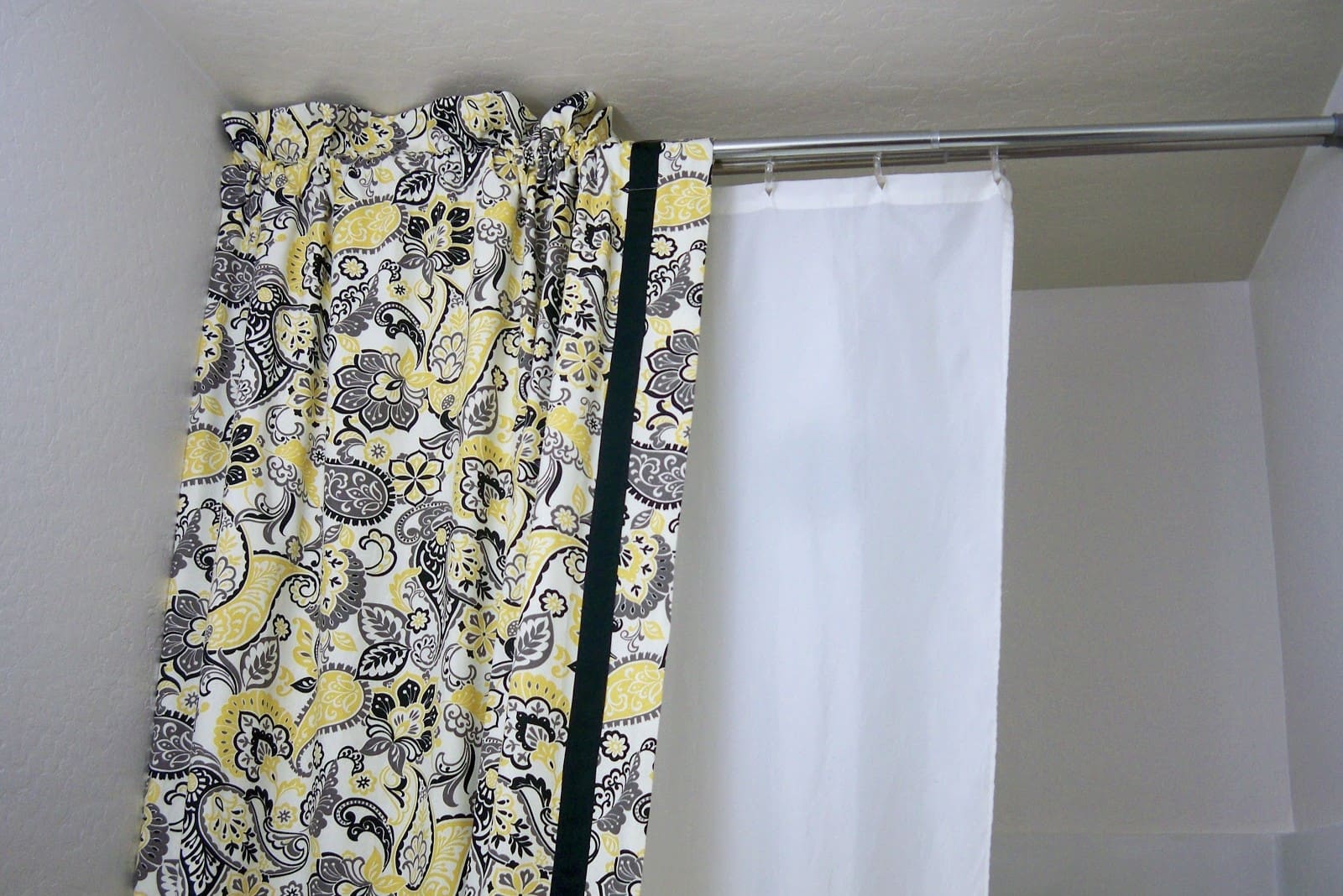
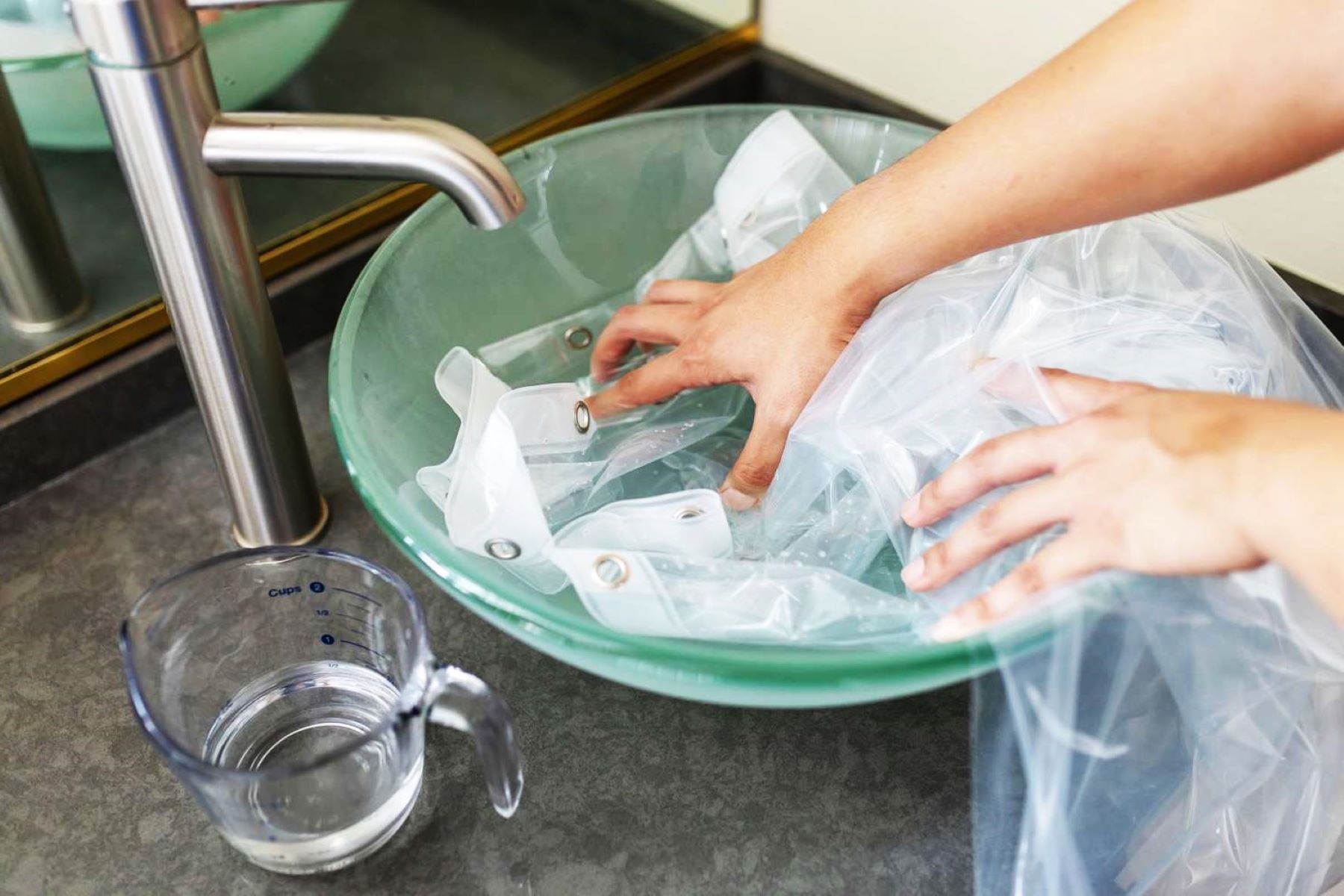



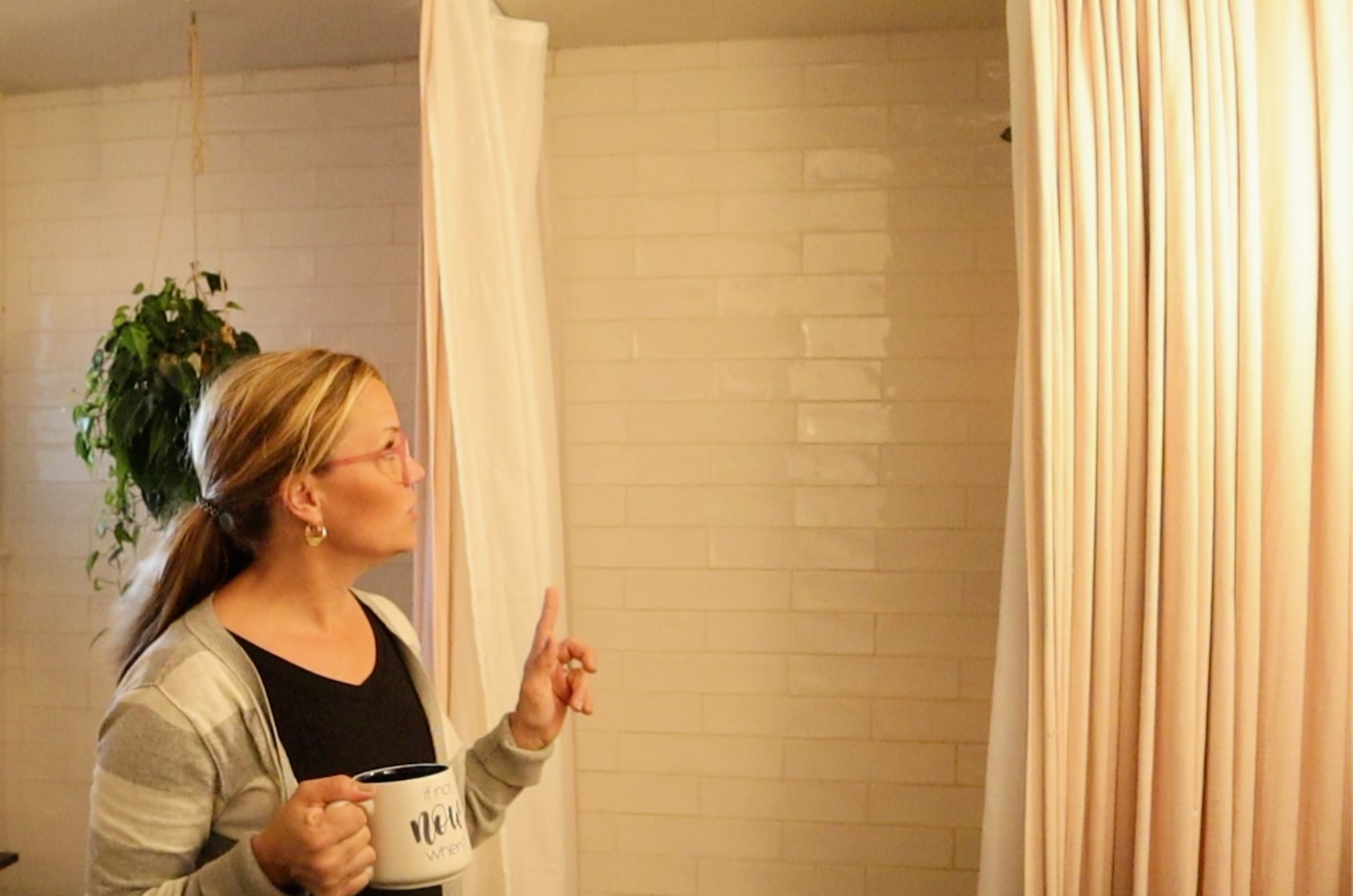
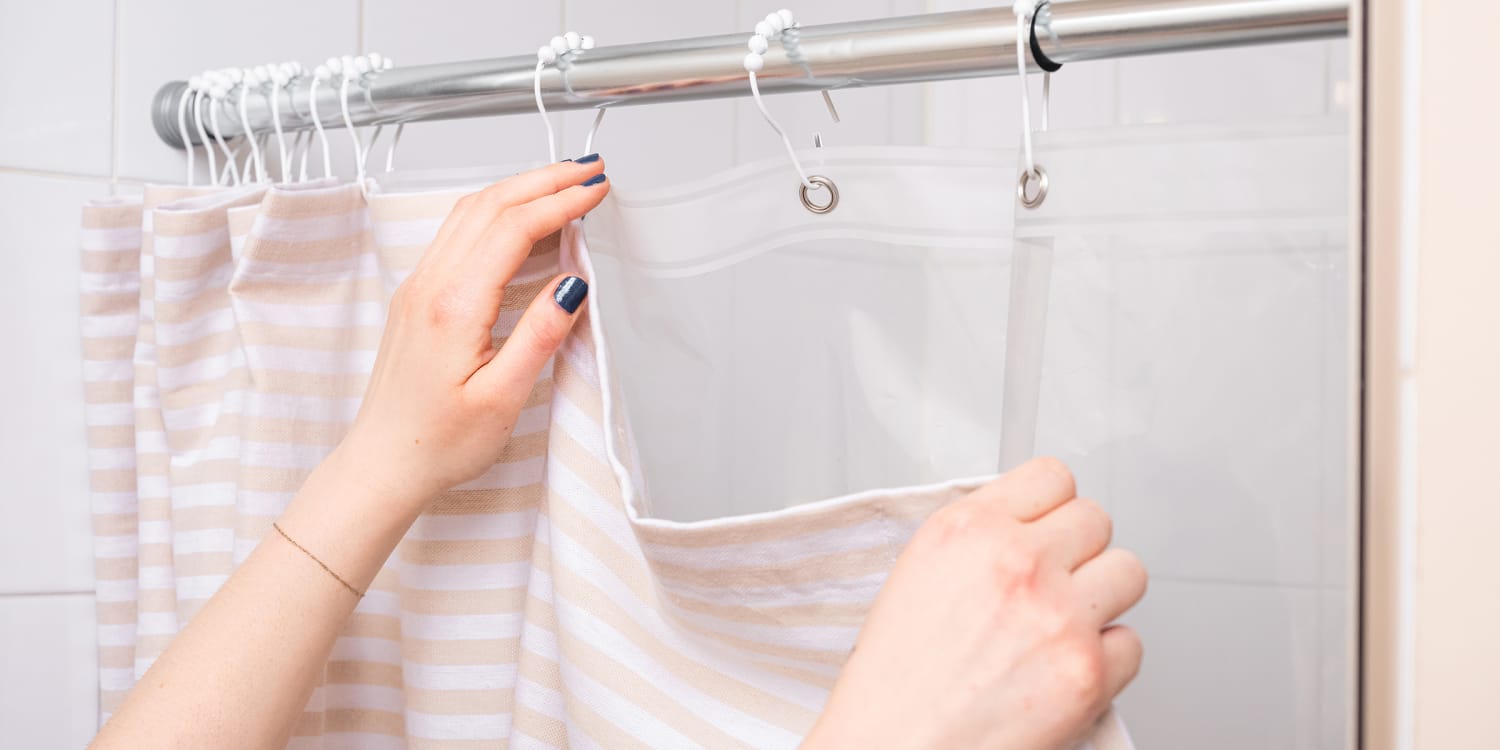
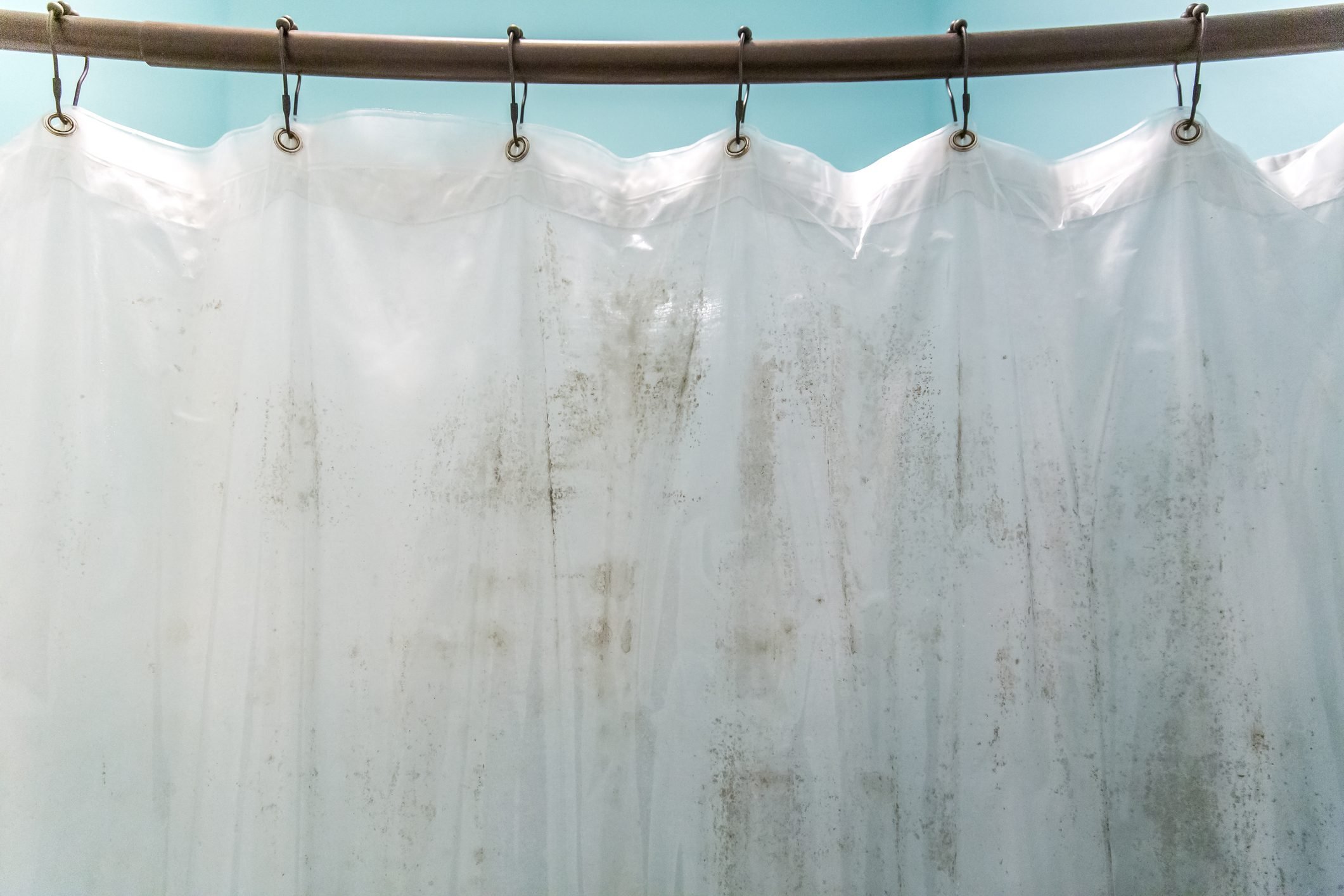
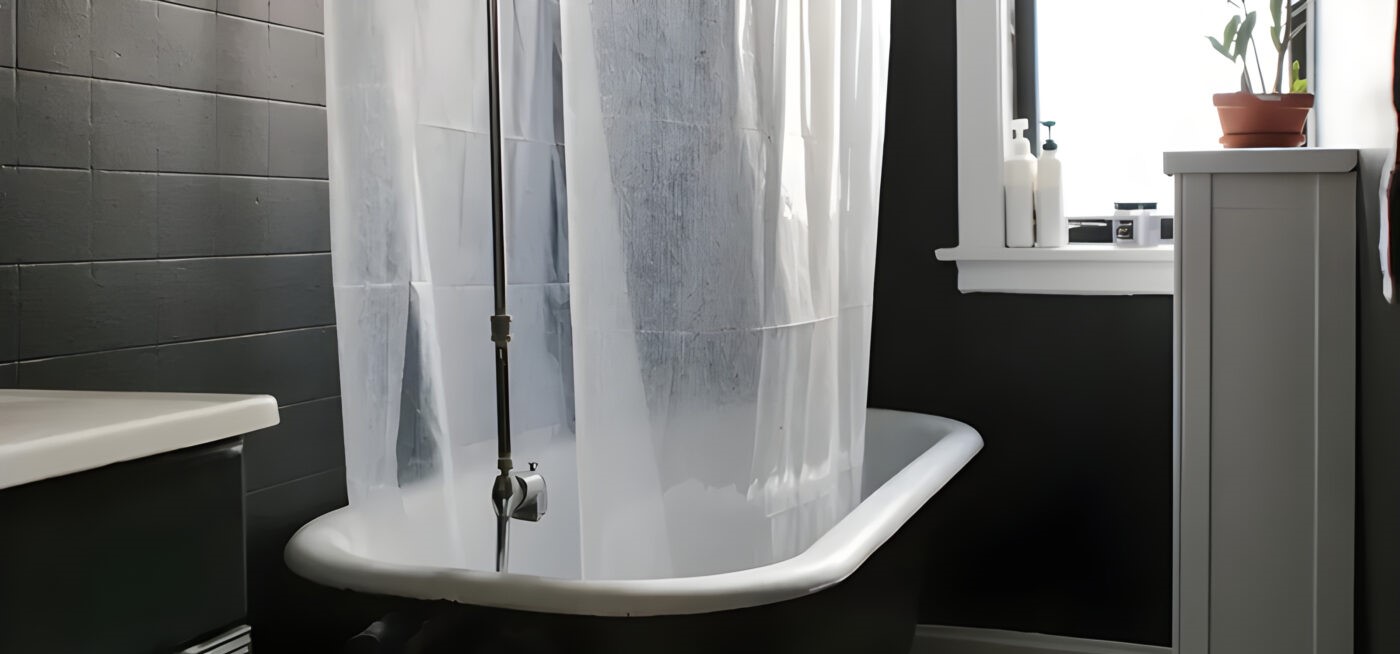
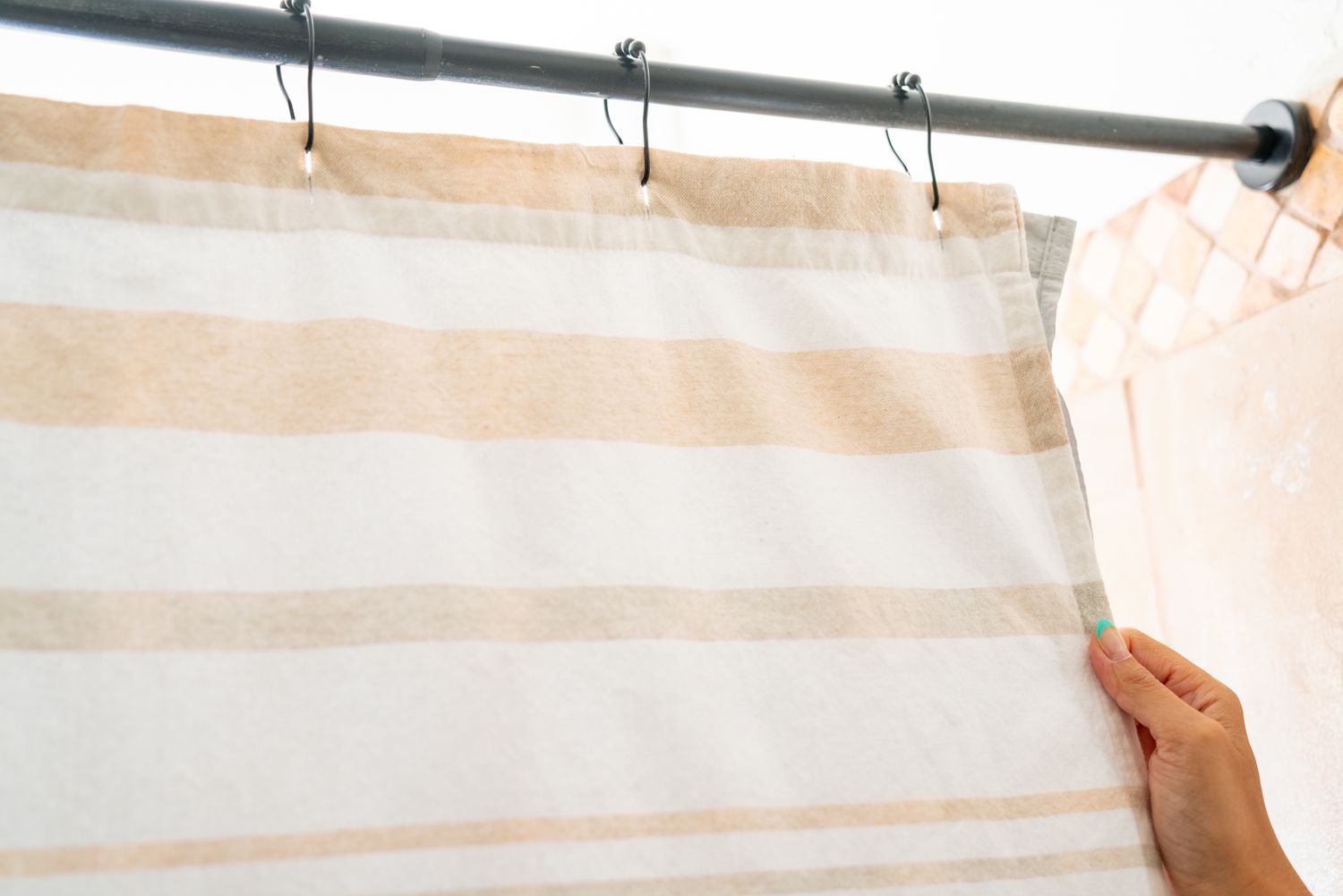
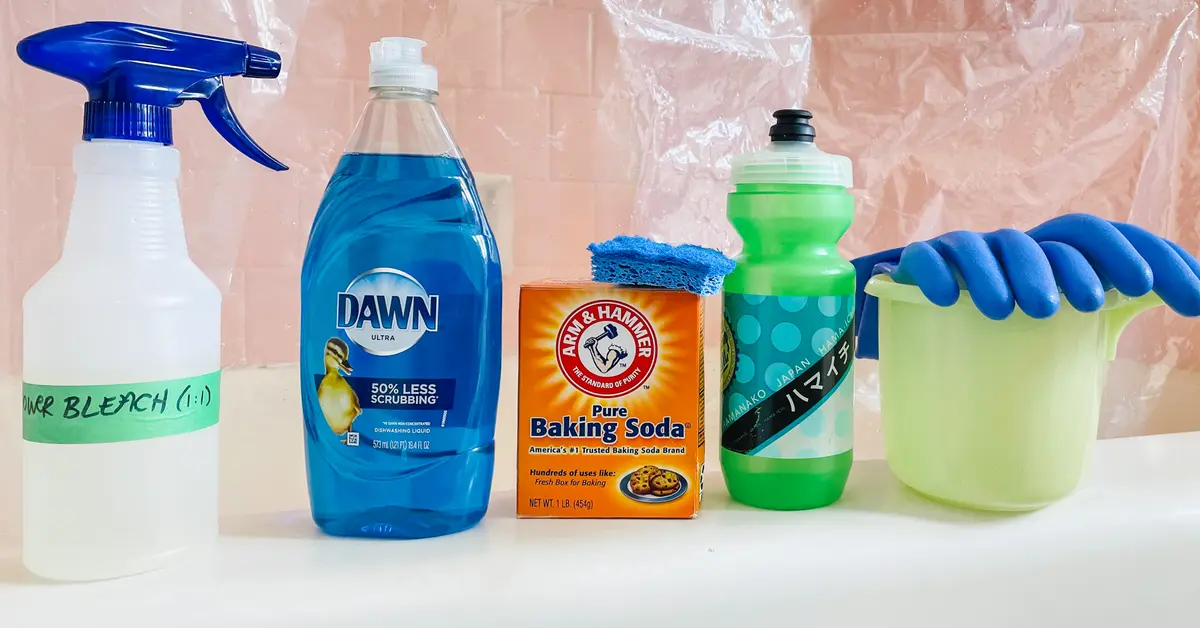



0 thoughts on “How To Clean A Shower Curtain And Its Liner”